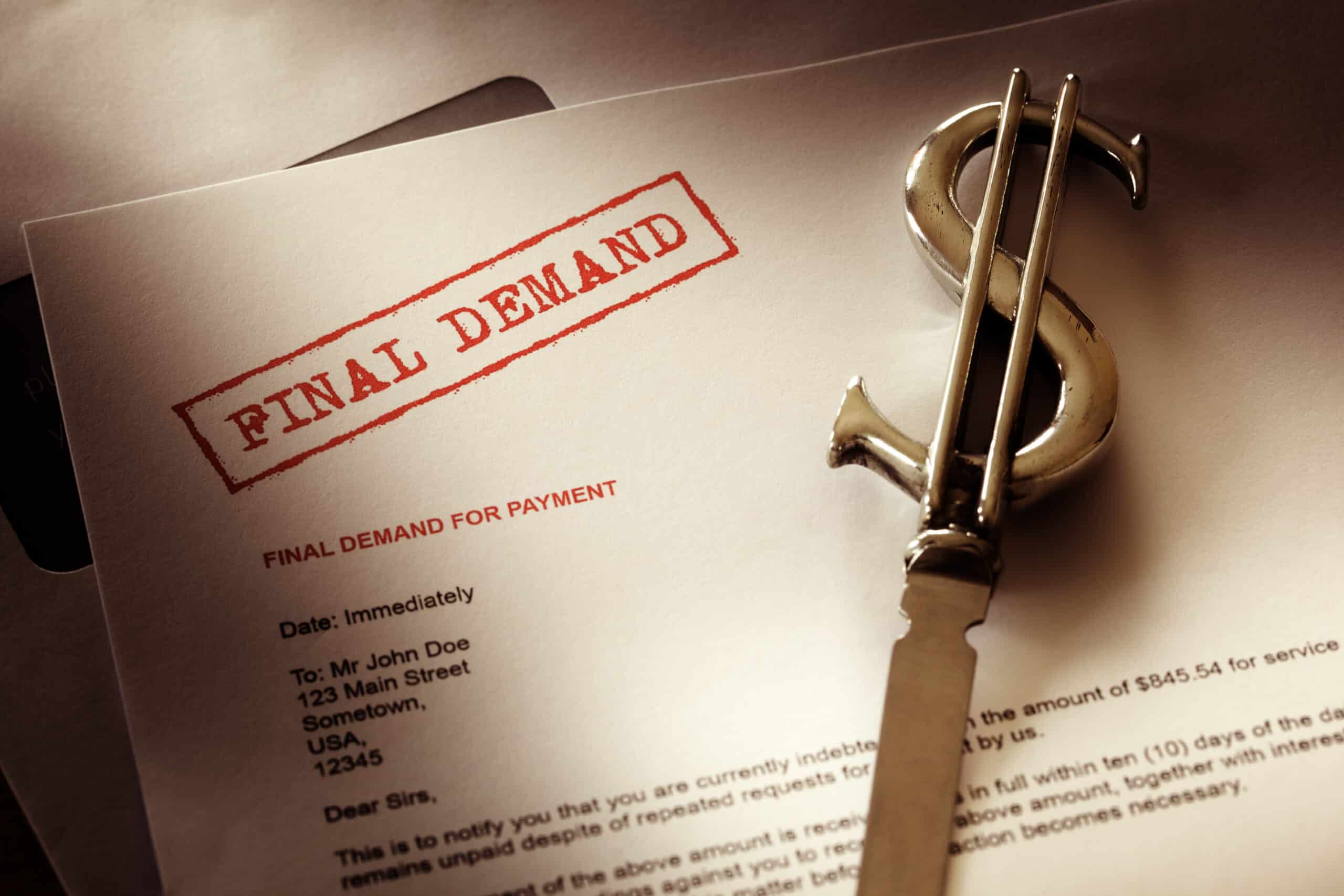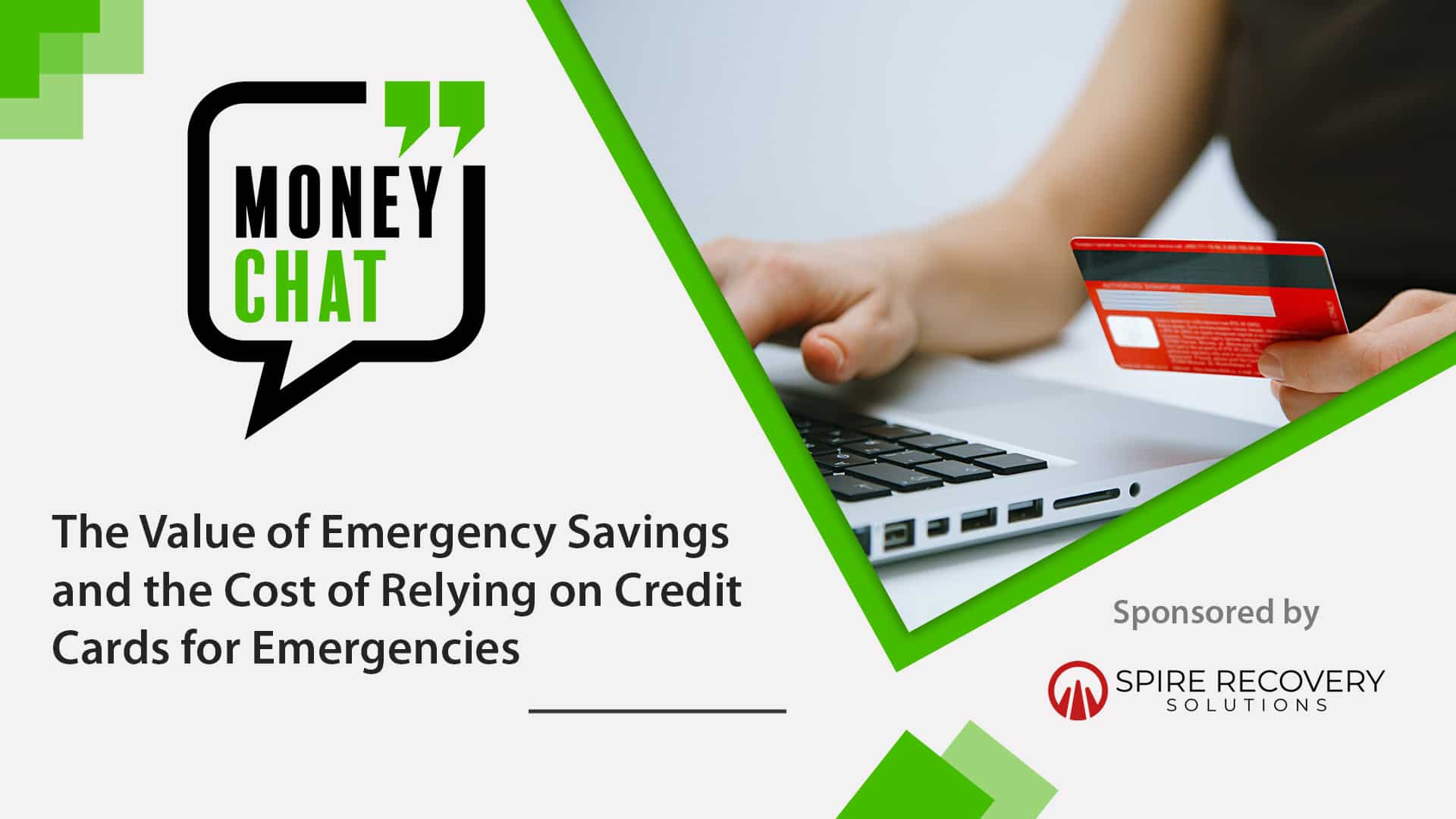
The Difference Between a Collection Account and a Judgment
Have you ever grappled with financial jargon, especially when debts are involved? You’re not alone. “Collection account” and “judgment” are both terms that frequently pop up in the world of debt recovery. At first glance, they might seem interchangeable. But they aren’t, and it’s important to know the difference.
These two terms, while interconnected, play distinct roles in the ebb and flow of debt recovery. Most debts are sent to collection agencies. If traditional collection attempts are unsuccessful, some eventually find their way to law firms and the court. Each stage has its consequences, strategies, and implications—both for creditors and consumers.
In this Money Chat, we’ll talk about the nuanced differences between a collection account and a judgment, shedding light on their roles in the debt recovery process and what this could mean for you.
What is a collection account?
A collection account starts its journey as a regular debt. Maybe it’s from a credit card bill, a medical expense, or an unpaid utility bill. However, for various reasons—financial hardships, consumer oversights, disputes—the consumer might not settle this bill within the stipulated time frame. As days turn into weeks and weeks into months, this unpaid debt starts ringing alarm bells for the original creditor.

Recovering creditor losses
When a debt remains unpaid for a prolonged period, typically several months, the original creditor makes a decision: rather than continuing to chase the debt themselves, they may transfer the debt to a third party collection agency or sell this outstanding debt to a debt buyer (sometimes referred to as secondary creditors). This move is often motivated by the creditor’s desire to reduce some of their losses, even if it means recovering only a fraction of the owed amount.
Credit reporting of collection accounts
One significant impact of this transition is on the consumer’s credit report. When a consumer defaults on a debt and the account is “charged off” (closed), the defaulted debt does not disappear but morphs into what’s labeled a “collection account.” Collection accounts can remain on and potentially affect the consumer’s credit report for several years, depending on jurisdiction and specific circumstances.
Impact on consumer credit
The introduction of a collection account on a credit report can have wide-ranging implications. It could lower the consumer’s credit score, making future borrowing more challenging or expensive. It’s a mark that signals to potential lenders that there was a hiccup in the consumer’s financial history, and thus, they might be a riskier proposition. (It’s worth noting that sometimes a collection account can be removed from credit reports once the debt is paid in full. This can be discussed with your creditor or collector.)
What’s the role of collection agencies?
Diving deeper into the debt recovery process, we find collection agencies playing a central role. These specialized businesses operate at the crossroads of finance and communication, aiming to bridge the gap between creditors and consumers. But how exactly do they function, and what tools do they employ to achieve their goals?

Communication attempts
Collection agencies focus their efforts on outbound communication strategies such as phone calls, texts, letters, or emails. These efforts are increasingly digital to meet the preferences of consumers.
Collecting voluntary payments
A collection agency’s strength lies in its ability to communicate and negotiate to successfully assist consumers in resolving accounts through voluntary payment plans, settlements, and payments in full. Their methods, though varied, all revolve around a singular goal: facilitating a resolution between the consumer and the creditor without the need for legal escalation.
When does a collection account transition into a judgment?
So what happens when friendly reminders and consistent communication from collection agencies fall on deaf ears? Unlike law enforcement or the judicial system, collection agencies don’t wield legal enforcement powers. They can’t seize assets, garnish wages, or implement liens without a court’s authorization. So when traditional collection attempts fail to produce results, the debt recovery process may sometimes be transferred to a collections law firm.

When substantial account balances remain unpaid and communication breaks down, creditors may be left with no other recovery option but to transition the account toward preparation for legal enforcement strategies. (It’s important to note that hardships, disputes, and individual circumstances are taken into account; that’s why prompt communication with your creditor or collector is crucial.) Here’s a closer look at this escalation from traditional collections to legal strategies.
Escalating the account to a legal team
Once a collection agency exhausts its avenues and still can’t recover the debt, the account might be handed over to specialized legal teams (aka creditors’ rights/collections firms). These are law firms that possess specific expertise in debt collection legal strategies. Their involvement signifies a shift in approach toward the recovery of the debt.
Serving the consumer
Once in the care of a law firm, a collection account moves through steps toward preparing for legal enforcement strategies. The escalation culminates when the consumer, termed as the defendant in legal proceedings, is served with a Summons & Complaint. The consumer is now compelled to respond, either by agreeing to pay, negotiating a settlement, or defending themselves in court. Ignoring these legal documents can lead to default judgments, which are often less favorable to the consumer because the consumer (defendant) has neglected to present his/her side of the case. Hence, it’s important to respond and participate in the process when an attorney contacts you about a debt.
The court’s role in ordering a judgment
If the consumer contests and the lawsuit moves forward, a court of law assesses the validity of the claim, the amount owed, and any defenses the consumer might present. After thorough deliberation, if the court rules in favor of the creditor (the plaintiff in this scenario), a “judgment order” is issued.
But what is a judgment? In essence, it’s the court’s stamp of affirmation to the contractually binding—and now legally binding—financial obligation of the consumer to the creditor. It’s a legal proclamation that unequivocally states the consumer is obligated to pay the specified amount. This judgment transforms the nature of the debt. No longer is it just an outstanding bill or an unresolved financial obligation; it’s now a court-mandated directive.
How are judgments enforced?
The implications of a judgment are significant. A judgment equips the creditor with a potent tool: the authority of the law. With a judgment in hand, the creditor can seek legal means to ensure repayment.
While the means vary depending on state laws and more, legal enforcement strategies may involve garnishing wages, placing a lien on a property, or levying a bank account. Such measures ensure the creditor is paid even if the consumer is unwilling to make voluntary payments. (Financial hardships should always be communicated as soon as possible and do affect the process.)
Additional opportunities for settlement
Judgments can also provide creditors with leverage for negotiating settlement agreements; this is yet another opportunity for consumers to advocate for themselves by responding promptly to any legal communications from the court or the firm. When consumers willingly communicate with collection firms, there may be options to avoid non-voluntary payments and instead make voluntary payments on a legally binding stipulated plan. (Keep in mind, however, that if the defendant defaults on the agreement, the stipulation is typically that the judgment and steps toward any related enforcement actions will resume. Again, communication is crucial.)
The progression of debt recovery efforts
Debt recovery is a layered journey, beginning with gentle nudges from collection agencies and potentially culminating in the authoritative gavel of the court. For consumers, understanding this progression—from a simple collection account to the formidable weight of a judgment—is crucial. It underscores the escalating stakes and reinforces the importance of proactive communication and resolution with creditors.
Navigating the financial landscape, especially when debts loom, can be daunting. Yet, with knowledge as a compass, consumers can better chart their course, recognizing the difference between a collection agency’s persuasive approach and the binding force of a legal judgment. By appreciating these distinctions and acting accordingly, one can reduce the repercussions, safeguard their financial health, and ultimately, steer their fiscal ship toward calmer waters.
Free Resources
The Consumer Financial Protection Bureau offers comprehensive resources to understand more about finances. This collection of articles can help you understand your debt collection rights and responsibilities.
For a comprehensive grasp of the credit life cycle, from account distribution and payment to eventual removal from credit reports, consider exploring more of Receivables Info’s Money Chat series. Offering many cost-free and readily available educational resources, this series equips consumers with the knowledge they need to confidently navigate their way through debt management.
Have an idea for a Money Chat topic?
We want to hear from you! If you have a suggestion for a future Money Chat topic, please email us at [email protected].
The information contained in this article is meant to serve as general guidance for consumers and not meant to serve as comprehensive or personal financial advice. For questions about your individual circumstance, finances, or accounts, please contact your creditor(s) and/or financial advisor directly.
Thank you to our sponsor, Slovin & Associates
Slovin & Associates, Co., LPA aims to achieve the highest rating for creditor’s rights law firms in Ohio, Kentucky, and Indiana by obtaining expeditious and cost-efficient results in a professional and low-maintenance environment for our clients in the fields of collections, commercial and consumer litigation, bankruptcy, leasing and landlord-tenant law, and Fair Debt consulting.







